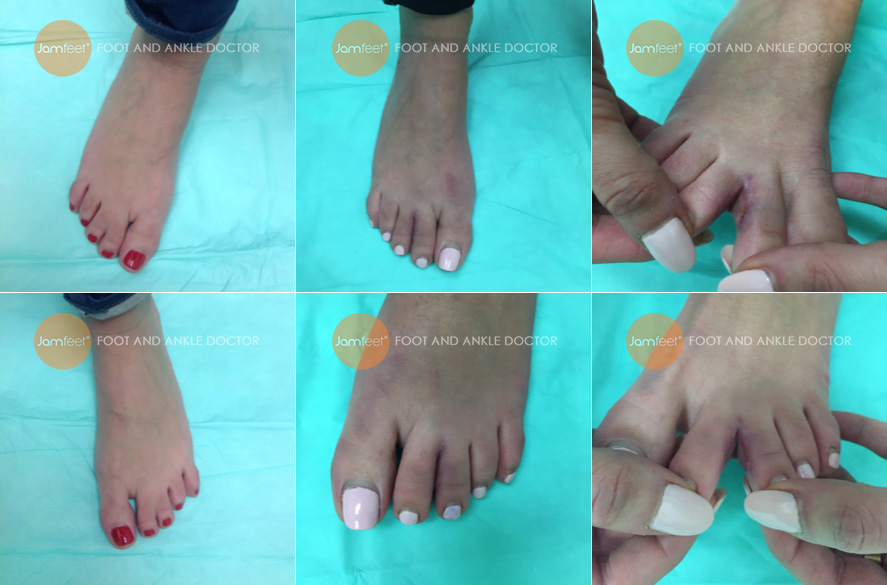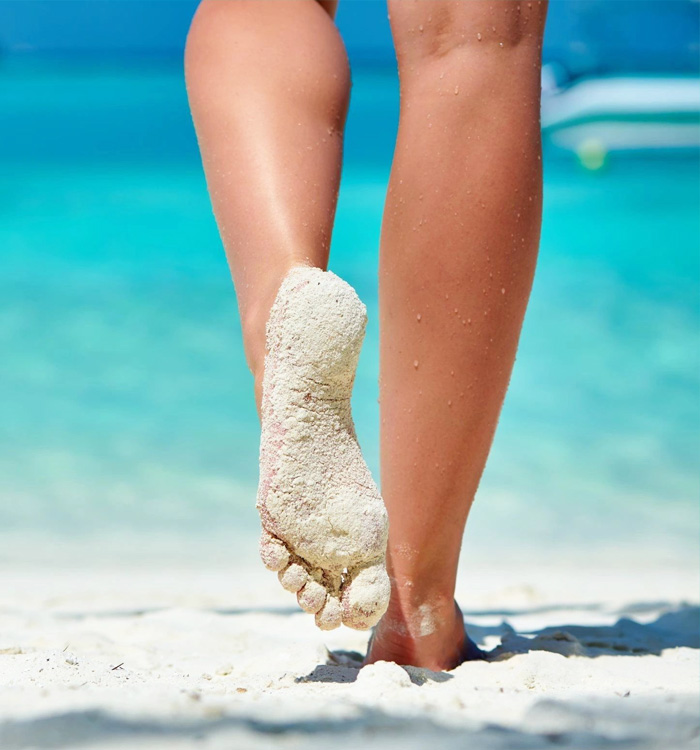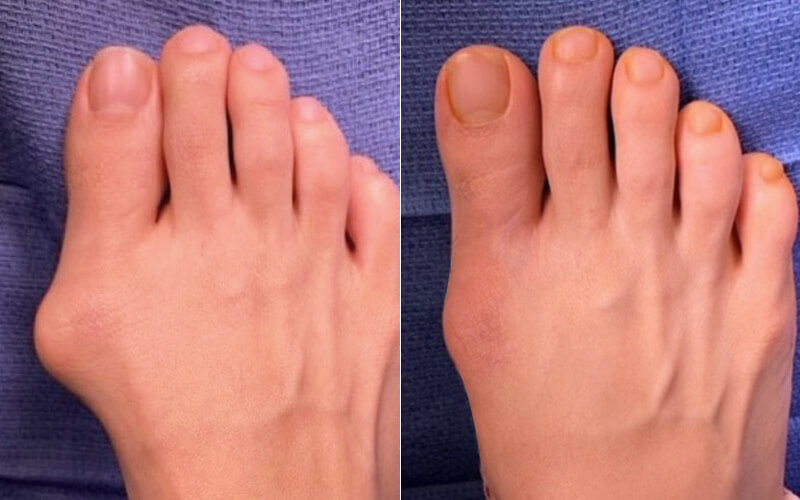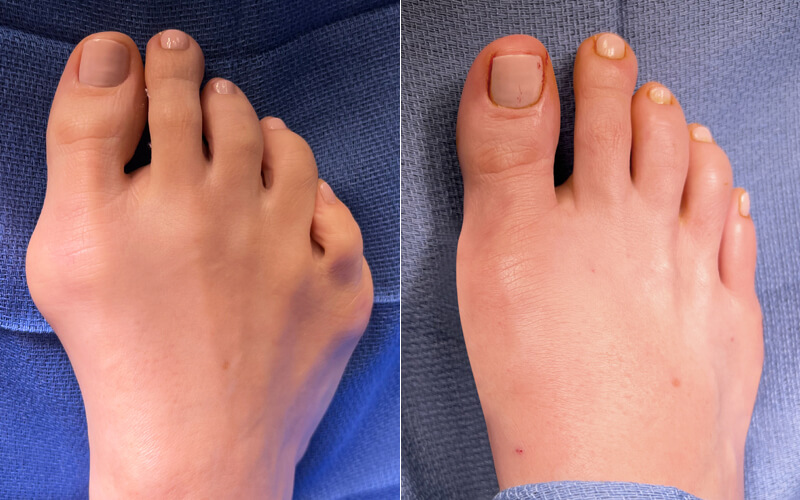Webbed Toe Separation Surgery
“Webbed toes” refers to a condition in which toes are fused to each other. It is also called “syndactyly,” but the term syndactyly is commonly used to refer to both fused fingers and fused toes. Webbed toes are also known as twin toes, duck toes, turkey toes, and tiger toes.
The toes most commonly fused together are the second and the third toes. But other toes may be fused as well. In some rare incidences, multiple toes may be fused together. Both feet may have webbed toes as well. Usually, only skin and soft tissue are fused (cutaneous connection) but in rare cases, the bones may be fused as well (osseous connection).


Why do webbed toes develop?
The embryo develops into the complex human form after a miraculous and complex process in the mother’s womb. In the embryonic phase, the hands and feet develop in the form of paddles. They don’t have fingers and toes initially. Then, apoptosis (or programmed cell death) occurs and carves fingers and toes in the hands and feet. Webbed toes occur if the apoptosis, or programmed cell death, can’t take place properly between any two toes
Causes of this phenomenon are unknown. There is a mild genetic predisposition as it affects members of the same family. Other than that, no other causative factors have yet been identified.
Most of the time, webbed toes occur as an isolated condition, but they may be a part of some other syndromes as well. The most common of these syndromes is Down’s syndrome.
What is the incidence of webbed toes?
The incidence of webbed toes is nearly one in every 2500 births.
Webbed toes may be of different types:
- Unilateral or bilateral: Affecting only one side of the body or both the sides.
- Severe, moderate or mild: Depending upon the extent of the fusion of digits; they may be completely or partially fused.
- Symmetric or asymmetric: Affecting the same toes on both sides of the body or affecting different toes.
- Simple or complex: Involving only two toes or involving multiple toes.
Signs and symptoms:
Besides the visibly fused toes, there are no other signs or symptoms of this condition. The patient can walk and run properly.
Investigations:
The doctor may order a few tests to see the extent of the fusion and to see if the bones are separate or fused. These tests may include an X-ray, CT or an ultrasound scan.
Diagnosis:
The doctor will diagnose it on general examination by examining the fused toes. The doctor will perform a complete examination to rule out any associated syndromes with the webbed toes such as Down’s syndrome.
Treatment:
There is only one treatment available for webbed toes and it is the webbed toes separation surgery. This surgery is sometimes termed as de- syndactyly.
Why is this surgery performed?
The purpose of this surgery is purely cosmetic as the webbed toes do not interfere with any function of the toes. But the patient may feel uncomfortable with the outward appearance of their feet.
Different options for this surgery:
This surgery can be performed in two ways.
- Without a graft: Splitting the fused toes and closing the wounds without a skin graft.
- With a graft: Splitting the fused toes and closing the wounds with the placement of a skin graft. A skin graft is a piece of the skin taken from another site of the body of the patient. It is then attached to the site of the surgical wound and the blood supply for the site of attachment is established.
At what age can this surgery be performed?
This surgery can be carried out at any age but keep certain considerations in mind.
In most cases, this surgery is usually performed between 12 and 18 months before full development has occurred.
Syndactyly of the fingers may affect motor and cognitive development of a child. But it is different for fused toes. Syndactyly of the toes normally doesn’t have negative impact on the motor and cognitive development of the child as no physical function of the child is limited by this condition. Some surgeons and guidelines advise waiting for the child to grow up. Although it is perfectly safe to have this surgery performed in childhood as well.
How is this surgery done?
What type of Anesthesia used for this procedure?
The surgery for the separation of fused toes is generally performed under general anesthesia or IV Sedation.
Preparing for the surgery:
Tell your surgeon about any medical conditions you have. If the patient is a child, his parents should inform the doctor of their medical history.
Preparations for anesthesia:
Before performing any surgery under general or IV Sedation anesthesia, tests for anesthesia fitness are performed. These include heart function tests, kidney function tests, and lung function tests.
A history of any allergies, drugs and alcohol use will be taken.
Complications of this procedure:
With any surgery, there are risks of getting complications related to the anesthesia and the actual surgical procedure.
Anesthesia complications:
- Nausea and vomiting, headache, blurred vision, dizziness: Very common after anesthesia due to various medicines used in the procedure.
- Sore throat: Occurs because of a tube placed in your airway to assist ventilation. It is short-lived and settles down without the need for any medication.
- Itching: It occurs due to an allergic reaction to opiate containing medicines. It is not very common.
- Shivering: Occurs due to the patient becoming cold during the operation or due to some medicines given for anesthesia. The patient will be warmed by blankets and oxygen given to them until their body temperature becomes normal.
- Damage to lips and teeth: Minor bruises on lips are common.
- Confusion or memory loss: More common in older people. But It is always transient.
- Muscle pains: Due to a drug used during anesthesia called suxamethonium (a muscle relaxant). It is always temporary.

Surgical complications:
- Bleeding from the wounds: Careful surgical procedure prevents this.
- Infection of the wounds: Good hygiene prevents this.
- Formation of clots: Clots may form in any surgery. For this reason, in susceptible patients, thromboprophylaxis is given.
- Graft failure: Due to the inadequate blood supply to the skin graft, it may wither off and die. In such cases, another graft may have to be fashioned and places with making sure that it gets a better blood supply.
- Numbness: Some areas of numbness in the affected toes after the surgery are a normal occurrence as the nerves may get damaged during the surgery.
- Stiffness of joints: This may occur after a few weeks due to inactivity and immobility and it may require physiotherapy to solve this issue. The casts and bandages used after the surgery completely immobilize the joints giving the surgical wounds a chance to heal. This lack of activity may cause stiffness.
Precautions and care after the surgery:
No hospital stay is required after the surgery. The toes which were operated on are usually put into a special shoe or boot to immobilize them so that the skin gets a chance to heal. Pain medications will be given for a few days after the surgery.
The gauze bandage stays on for two weeks after the surgery. The dressings on the wound will be removed completely by 4 to 6 weeks depending on heeling status. A pad (rubber spacer) may be used for a few weeks to keep the toes separated after the dressings come off to prevent the formation of any adhesions while the skin regrows. Keep the scar moisturized and massage the scar. It will help to keep the scar soft.
Try to rest as much as possible after the surgery.
It is okay to walk a bit in a special orthopedic shoe (but only do very important tasks like going to the restroom). Whenever you take your foot down, a little swelling on it is normal. Keeping the foot elevated will resolve this swelling.
You will regain the complete function of the foot back gradually after the bandages come off. Wear a special orthopedic shoe for two to three weeks after the surgery so that the skin wounds may heal completely.
A few sessions of physiotherapy may be needed if the joints become stiff due to immobility after the surgery. This will help the joints to gain complete function back
When should I contact my doctor again?
Your doctor will schedule some follow-up visits after your surgery to see if the wounds have healed properly and if the desired results of the surgery have been obtained. But if you feel any of the symptoms below between those follow-up visits, contact your doctor as soon as possible.
- Increasing pain
- Increasing redness, swelling, or oozing around the wound site
- Fever
- Tingling toes
- Blue nails
Prognosis:
This corrective surgery for the fused and or syndactly of toes has a very high success rate. If the toenails were fused as well, the shape of the toenails may not be completely normal and often can differ form the uninvolved toes after the surgery.
Although rare, it is possible that some patients may require additional corrective surgeries after the first procedure.
It typically takes a month or so before the patient can begin to put pressure on the separated toes and 3–6 months before they fully heal from the surgery, depending upon the extent of the procedure.




